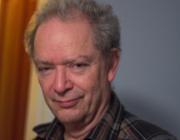Consider the following propositions:
P1: No causal influence, mass-energy, or information can be propagated at any speed faster than the speed of light in vacuum.
P2: Despite Bell’s Theorem and other compelling evidence of nonlocality, quantum mechanics stands in a relationship of “peaceful coexistence” with special relativity.
These two propositions are considered to be foundational in modern physics. To seriously question either or both of P1 and P2 would be considered not only a bad career move for a young scientist or philosopher of science, but a sign of incompetence if not mental instability. (Or in my case, perhaps impending dotage.) And yet I have devoted much of my philosophical career to questioning the conventional reasoning used to support these propositions, at least far back as my PhD dissertation of 1991. It is certainly not the only thing I work on, but I continue to doggedly chip away at P1, P2, and the complex of problems that underlies them.
Why this preoccupation with a set of problems that most people who work on foundations of physics think, or would like to think, were solved a long time ago? Part of it is simply an instinctive dislike of arbitrary prohibitions. I have great sympathy for the remark of Leo Szilard, who said, “Pronouncements of experts to the effect that something cannot be done have always irritated me.” (See Richard Rhodes, The Making of the Atomic Bomb, Simon & Schuster, 1988, Ch. 1.) Szilard, in a moment of such annoyance, conceived of the basic principle of the nuclear chain reaction a few minutes after reading Lord Rutherford’s statement that any thought of extracting usable amounts of energy from nuclear reactions was “moonshine”.
I don’t reflexively naysay any physical law that prohibits something; I certainly do not think, for instance, that there are any fundamental problems with the laws of thermodynamics (though there are still many things we have to learn about their applications). What bothers me about P1 and P2 is that much of the argumentation used to support these propositions is, in my view, sloppy, hasty, if not outright question-begging. And I suspect (though this is difficult to document) that a major reason why many extremely intelligent people are unable or unwilling to see the shakiness of the reasoning in support of P1 and P2 is that the subject has become taboo. Most serious scientists do not discuss the possibility that the orthodox reading of relativity could simply be wrong. It is a non-topic, like UFOs, ESP, or cold fusion.
Lee Smolin, in his provocative Trouble With Physics (Houghton Mifflin, 2006) makes a powerful case that “despite our best efforts, what we know for certain about [the laws of physics] is no more than what we knew back in the 1970s” (viii). Smolin identifies several possible explanations for this nearly fifty-year hang-up in the pace of fundamental scientific discovery, which he argues is unprecedented in the modern period. Smolin might not agree with me, but I would argue that one of the major reasons (though not the only reason) for the intellectual logjam that modern fundamental physics now faces is our failure to come to grips with the implications of quantum nonlocality for Einstein’s relativity.
Part of the problem goes back to Einstein himself, who helped to create quantum mechanics but in the end rejected what he sarcastically dubbed “spooky actions at a distance”. Einstein was, without question, by far the most creative and insightful physicist of modern times, but even thinkers as great as Einstein can be wrong. Rutherford was the leading figure in the discovery of the basic processes and laws of radioactivity; his scattering experiments had demonstrated the existence of the atomic nucleus, and he correctly predicted the existence of the neutron. And yet, when it came to the possibility of nuclear energy, his imagination simply failed him.
Einstein had no shortage of imagination. Indeed, he saw all too clearly what quantum mechanics would do to the principles of causality, locality, and determinism that he thought were essential not only to science but the very possibility of rational thought. So to answer Einstein’s concerns we need not only to achieve a more accurate understanding of the dynamics of quantum systems than he and Niels Bohr enjoyed in 1935, but also to speak to his philosophical concerns (which are shared by many others). Nonlocality and indeterminacy are fundamental features of the physical world, and we must come to find ways seeing that they are, indeed, natural. If they seem to threaten rationality, that fact can no longer be taken as a sign that the physics is wrong; rather, it is our notion of rationality itself that must be expanded.
[More to follow here! July 6/19.]


